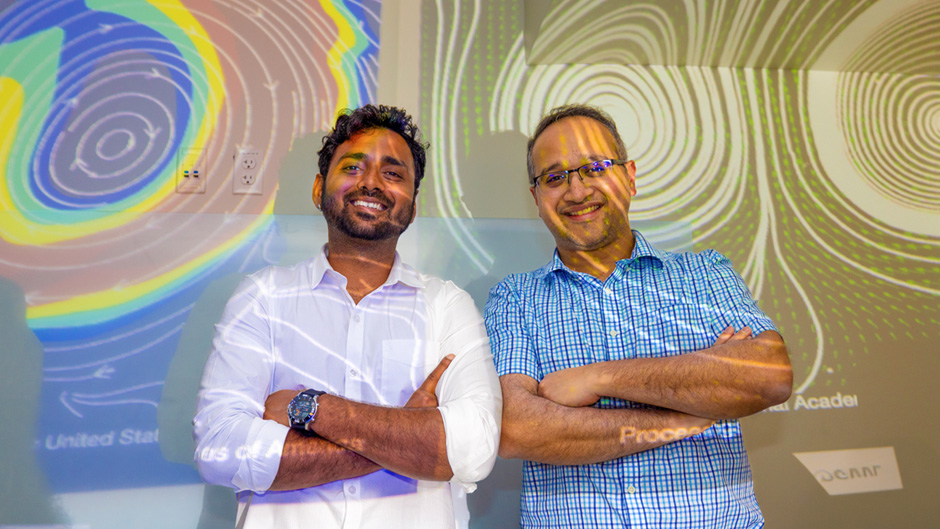CLEVELAND — In a study published July 26 online in the journal Diabetes, physician-researchers from University Hospitals Rainbow Babies and Children’s Hospital and Case Western Reserve University School of Medicine found that the asthma medication montelukast (brand name Singulair) can inhibit early changes in diabetic retinopathy, the eye disease which develops due to diabetes, in a mouse model of type 1 diabetes.
“We found that montelukast (Singulair) was able to disrupt the signaling of inflammatory molecules called leukotrienes. This disruption significantly reduced small blood vessel and nerve damage that we see in the early stages of diabetic retinopathy,” said senior author Rose Gubitosi-Klug, M.D., Ph.D., Chief of Pediatric Endocrinology at UH Rainbow and the William T. Dahms Professor of Pediatrics at CWRU School of Medicine.
“While most therapies target the late stages of the eye disease in diabetes, these findings offer a much-needed approach to treat the disease much earlier.”
“The re-purposing of a medication already FDA-approved for use in children and adolescents sets the stage for rapid translation of these animal model findings to human subjects,” said Dr. Gubitosi-Klug. “The daily dose equivalent used in the current study is similar to the once daily dose used in the treatment of asthma. Reassuringly, in our diabetes model as in asthma studies, this dose allows effective suppression of chronic inflammation, which can prevent pathology, but avoids complete inhibition of inflammation, which can compromise innate immunity.”
“Moreover, montelukast was efficacious in both prevention and delayed intervention approaches, which implies relevance to patients with newly-diagnosed diabetes as well as individuals living with diabetes of longer duration,” she said. “Thus, there is promise that a safe treatment that effectively stabilizes airways in asthma may also preserve small blood vessels and nerve cells in diabetes.”
Other authors on the study are Reena Bapputty and Ramaprasad Talahalli, from UH and CWRU; Simona Zarini and Robert Murphy from the University of Colorado, and Ivy Samuels from the Louis Stokes Cleveland VA Medical Center. The study was funded by the National Eye Institute.
###
For more information about Case Western Reserve University School of Medicine, please visit: case.edu/medicine.
About University Hospitals / Cleveland, Ohio
Founded in 1866, University Hospitals serves the needs of patients through an integrated network of 18 hospitals, more than 50 health centers and outpatient facilities, and 200 physician offices in 16 counties throughout northern Ohio. The system’s flagship academic medical center, University Hospitals Cleveland Medical Center, located in Cleveland’s University Circle, is affiliated with Case Western Reserve University School of Medicine. The main campus also includes University Hospitals Rainbow Babies & Children’s Hospital, ranked among the top children’s hospitals in the nation; University Hospitals MacDonald Women’s Hospital, Ohio’s only hospital for women; University Hospitals Harrington Heart & Vascular Institute, a high-volume national referral center for complex cardiovascular procedures; and University Hospitals Seidman Cancer Center, part of the NCI-designated Case Comprehensive Cancer Center. UH is home to some of the most prestigious clinical and research programs in the nation, including cancer, pediatrics, women’s health, orthopedics, radiology, neuroscience, cardiology and cardiovascular surgery, digestive health, transplantation and urology. UH Cleveland Medical Center is perennially among the highest performers in national ranking surveys, including “America’s Best Hospitals” from U.S. News & World Report. UH is also home to Harrington Discovery Institute at University Hospitals – part of The Harrington Project for Discovery & Development. UH is one of the largest employers in Northeast Ohio with 28,000 physicians and employees. Advancing the Science of Health and the Art of Compassion is UH’s vision for benefitting its patients into the future, and the organization’s unwavering mission is To Heal. To Teach. To Discover. Follow UH on Facebook @UniversityHospitals and Twitter @UHhospitals. For more information, visit UHhospitals.org.


